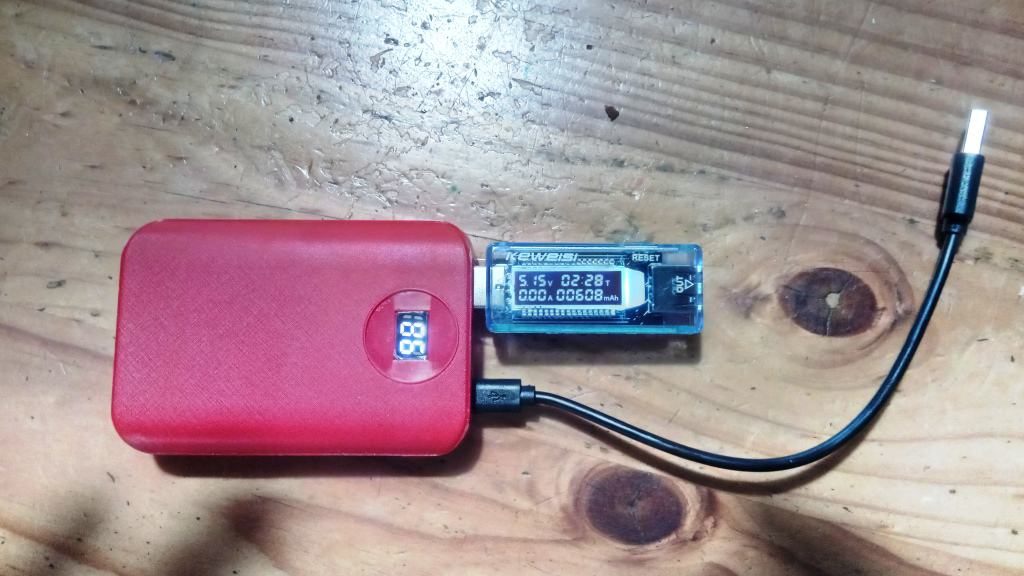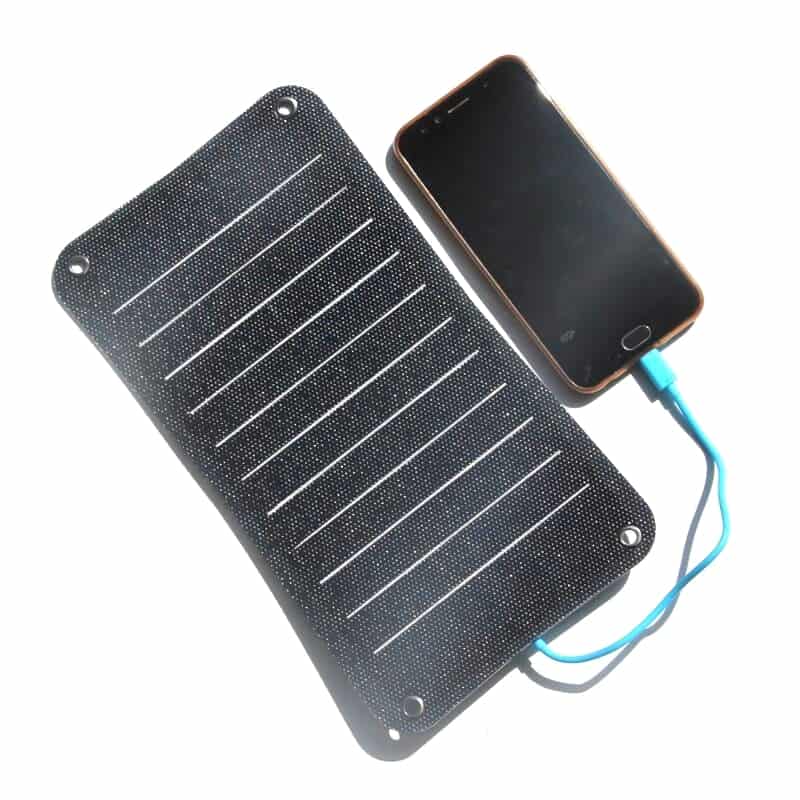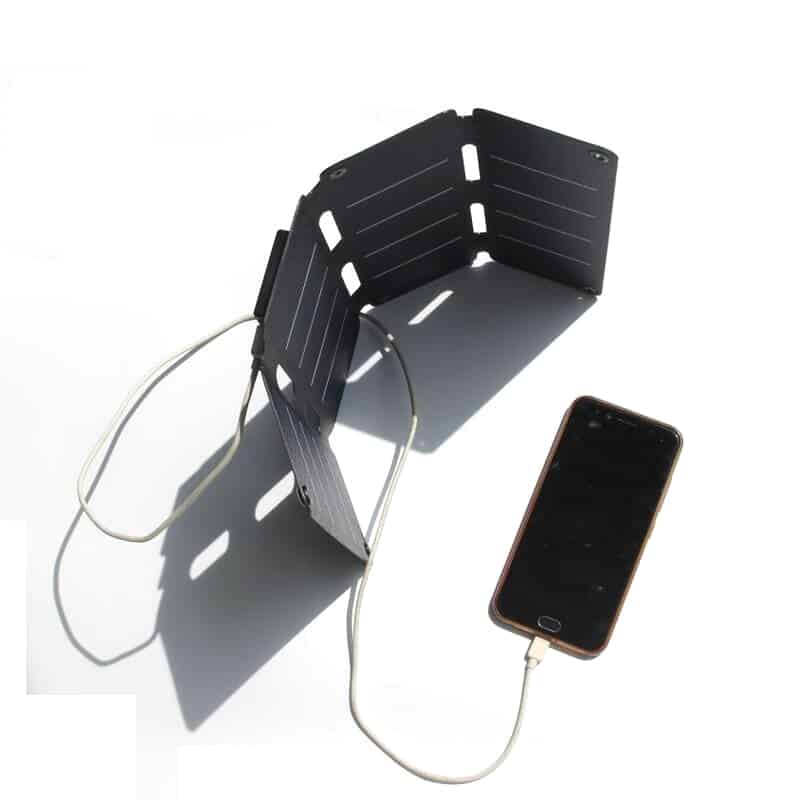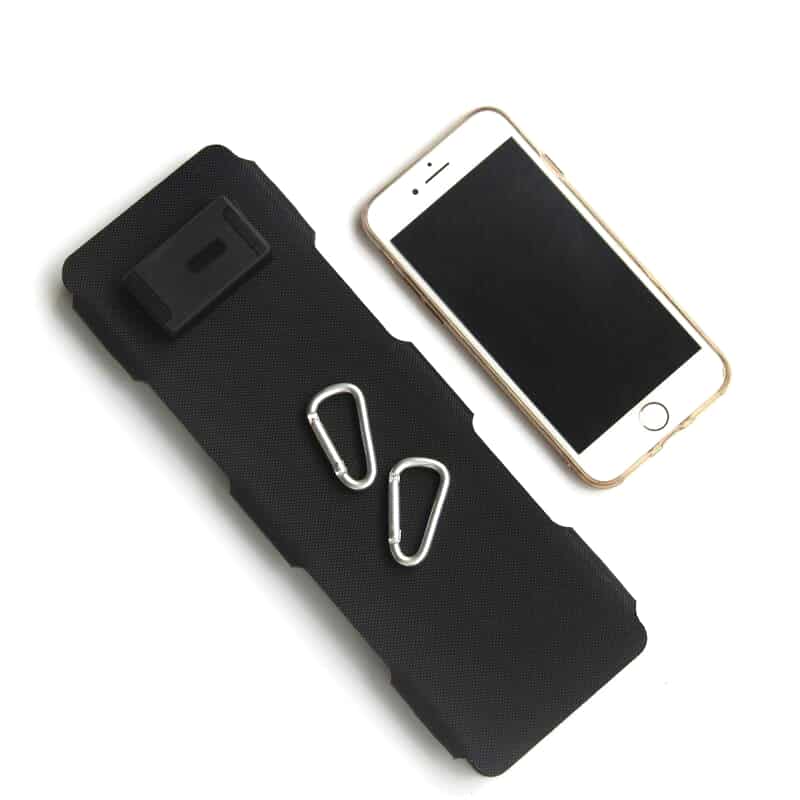This is a really handy piece of gear (18 grams). After you have bought it/them you are going to be throwing out a heap of other things! It measures the voltage and amperage through itself when plugged into a USB outlet and can time and add the total so that you can see how long it took to attain a certain number of milliamp hours of storage.

The top left is voltage (5.15 check). Below that is amperage going through: zero – it is not plugged in to anything. If it were the top right would be counting down time and the bottom right would be counting down milliamp hours. You may want to buy two so you can directly compare two devices at the same time.
You must have wondered whether a power bank really had the rated capacity. Now you can measure it by flattening it and charging it from flat. You can also tell whether enough current is passing through your cable into your power bank and by seeing how long at that amperage and voltage it takes to fully charge it how many milliamp hours are really stored in it.
I am using it to measure the output of various solar panel I have bought. Preliminary results are very informative. I need to buy two identical short USB extension cords to measure the outputs from panels which have more than one outlet. I will be doing a review when I have finished this (as I have warned before) but I would like to say that two particular panels stand out so far and of them one is more than three times as good as the second! This is irrespective of cost, weight etc.
The two panels I am most happy with are both Buheshui brand. One is a ’10 watt’ single unit; the other is a ’16 watt’ folding unit. I have put the wattage in inverted commas because with all of these things wattage is a matter of conjecture – or in this case proof will be upcoming!
I have found these 3×18650 power bank shown to be excellent. Mine cost US$3.08 (May 2020. Just try an Aliexpress search ‘PowerBank DIY Case 3x 18650 Battery Charger’. It is really good to be able read off the percentage charge. At 3400 mAhs each this power bank should have a genuine capacity of 10200 mAh and will weigh 183 grams complete with batteries – my scales. Also lots of outputs and inputs. BTW The 7″ cable weighs 7 grams. You can do better (weight wise – 4.56 grams).
This one has lost the plastic cover over the LED from being in the sun lots and falling off the roof of my car at 80 kph. The folding panel went with it. Both were well-nigh uninjured which is a pretty good recommendation. All these products were sourced from Aliexpress, so you have to wait a bit, particularly at the moment. Some of them can be purchased through Amazon if you care to pay a lot more!
Try to source genuine 18650 batteries. There are a lot of crooks out there selling rubbish. I am not trying to be an expert. You should do some research into lithium-ion batteries, their types and specific qualities of different 18650 batteries. You want one with a genuine maximum storage capacity and with rapid charge ability (ie able to handle higher amperages) – so that you can get the charge into it fast when the sun is shining brightly! However, be warned: the faster it will charge the shorter will be its life. Nonetheless that may be the best choice given the variable quality of sunlight and the fact that you may have few hours of charging opportunity per day.
The best battery for our purpose (for these power banks is (probably) the (genuine) Panasonic NCR18650B flat top 3400 mAh. Good luck with sourcing ‘genuine’. Tip: Buy the heaviest batter. Aside from measuring its performance (the purpose of the Keweisi above) this is the only good guide to its capacity. You do not want the button top. They are too long for these power banks.
My Solar Reflector is going to be a game changer in hiking (solar) charging. It will more than double the output of the solar panel. I am going to have to make another one for the larger folding panel mentioned before which has so much more output. It appears to put out three times the amperage through both USB ports in the same amount of sunlight!
Just try a Google search for ‘Keweisi’. You will find many opportunities to buy this device so everything depends on how much you want to spend and how soon you want it. Mine cost just over US$2 (may 2020) each.
This is the single Buheshui 10 watt unit. Also available from other sellers. US$12.90 (May 2020) 275 x150mm 141 grams single USB.

This is the 16 watt folding Buheshui panel. Also available from other sellers on Aliexpress. make sure you chose the 16 watt option. US32.68 (May 2020) 345 x245 x 2mm Folded size: 245 x85 x 30mm 250 grams dual USB.


That being said I still really think all the solar panels I have tried out so far are too heavy by far. They have bonded the cells to a really tough substrate (which is good as far as durability) but I would like to see roll-up cells bonded to a tough nylon material (as in this little one) producing say 30 (genuine) watts through two or more USBs with a weight of around 100 grams (no battery).
At the moment I think I may have to make my own. For example, I have found the 3A Max ‘Dual USB Charger Regulator For Solar Cell Panels’: here for US1.76 each.
See Also:
